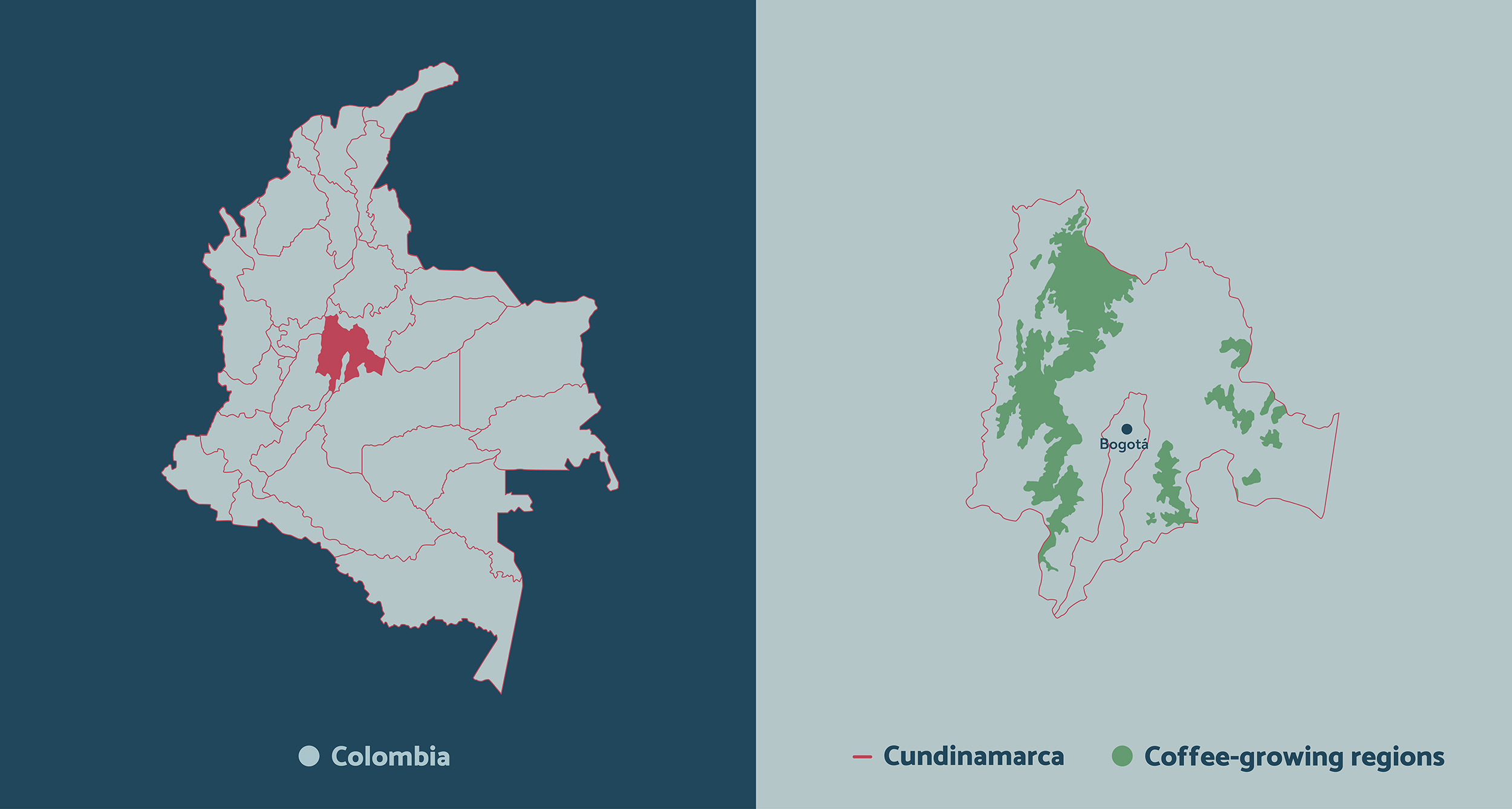Harvest: April–June (main crop), October–December (mitaca)
Elevation: 900–2,200 metres (3,000–7,200 feet) above sea level
Rainfall: 1,800–4,600 millimetres (71–181 inches)
Temperature: 19°C–25°C (66°F–77°F)
In the centre of Colombia, the department of Cundinamarca surrounds Bogotá, Colombia’s capital city. Cundinamarca sits astride the eastern cordillera, at the southern end of a great, high plateau that extends into Boyacá. Bogotá lies at the heart of this plateau. At 2,600 metres (8,600 feet) above sea level, it is one of the highest major cities in the world. Cundinamarca’s name derives from the Quechua words for ‘land of the condor’.
 La Chorrera in Cundinamarca, Colombia’s tallest waterfall
La Chorrera in Cundinamarca, Colombia’s tallest waterfall
The plateau itself is too high for coffee-growing. Most of Cundinamarca’s coffee grows to the west of the plateau, where the cordillera slopes down to the Magdalena River. A small amount also grows on the cordillera’s eastern slopes.
Coffee arrived in Cundinamarca around 1870, planted on large haciendas that relied on tenant farmers or sharecroppers to provide labour on the coffee plantations during harvest time (Mejía et al 2017). When coffee proved profitable, many large estates switched from raising cattle or producing crops such as tobacco and indigo, to growing coffee (Jiménez 1989). Some farms planted as many as a million trees, and production grew rapidly: Cundinamarca produced 150,000 bags per year by 1900 and 452,000 bags in 1932 (Palacios 2009).
 A scene from Viotá, a town in the heart of Cundinamarca’s historical coffee-producing region
A scene from Viotá, a town in the heart of Cundinamarca’s historical coffee-producing region
During the twentieth century, in the face of unstable prices, labour shortages, and civil unrest, the large haciendas gradually gave way to smallholder farmers, many of them former tenants who were able to purchase the land they occupied (Jiménez 1989). Today, the vast majority of Cundinamarca’s coffee is produced on small farms (FNC 2019).
